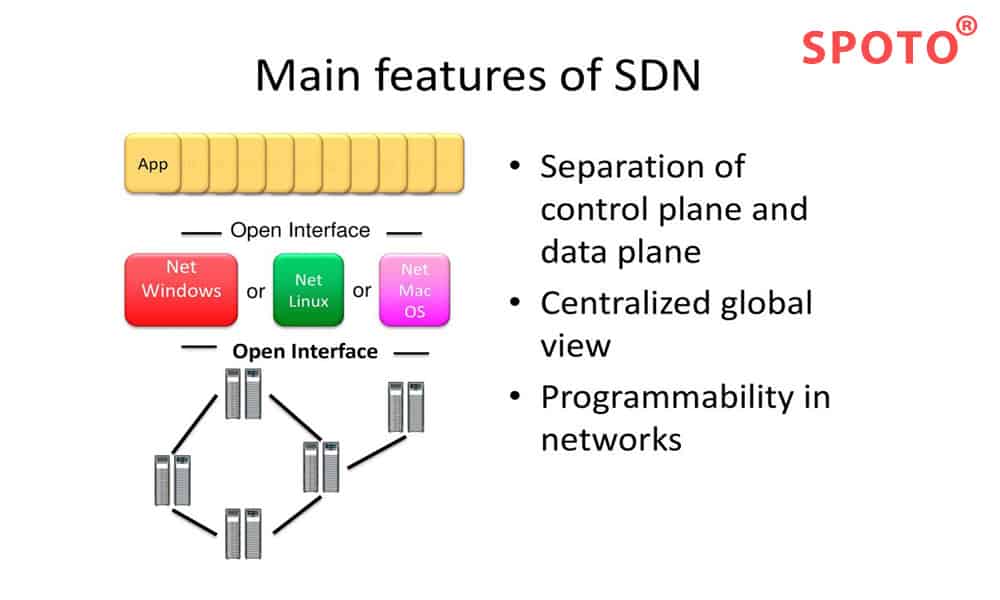
You may hear of SDN before, but do you know the detailed features of SDN? This blog will take you to deep dive into the world of SDN, which is required in the Cisco technology.
Why Software-defined networking (SDN)? Enterprises, Organizations, as well as service providers, would be surrounded by several competing forces. If you want to find a problem that would be coping with unpredictable traffic patterns, large data centers would be demanded. These traffic patterns would be causing a very high demand for particular resources. That they wouldn’t be meeting with existing network infrastructure.
So there are going to be two choices:
-
Scaling network infrastructure for meeting the peaks, which would be very expensive and complex.
-
Or you could be building a network in such a way that it could be reconfigured automatically to cope up with those peaks as well as the channel for meeting appropriate demands.
That’s where SDN would be coming into existence. If you want to learn more about the
SDN, follow
SPOTO and contact us to get the latest technology information!
What is SDN? Software-defined networking, shortly known as the SDN, is considered to be a unique approach or an umbrella term for cloud computing as well as networking. It would simplify the management of the network and enable the programmatically efficient configuration of a network to improve the performance of networks and monitoring results.
Software-defined networking would be emphasized on the fact that the basic architecture of the traditional network is considered to be so much complex as well as decentralized while the present network would be requiring more flexible architecture with a simple troubleshoot option. Software-defined networking would be recommending centralization of network intelligence by withdrawing the forwarding process of network packets, data packets, from the routing process, control process. Check out the training courses of SPOTO Club to gain more knowledge regarding the same.
Software-defined networking (SDN) Architecture Software-defined networking architecture layers would be consisting of 3 layers.
-
The Application Layer
-
The Control Layer
-
The Infrastructure Layer
-
The Application Layer
The application layer would be containing programs that programmatically and explicitly would be communicating their desired network behavior as well as network requirements to the SDN Controller.
-
The Control Layer
The SDN Controller is considered to be the mid-layer that would be connecting the application layer and the infrastructure layer. The northbound interface is considered to be the connection between the controller and applications. In contrast, the southbound interface would be considered as the connection between the controller and the infrastructure layer. This layer would be processing the instructions as well as requirements sent by the application layer, through the southbound interface and proceed them to the networking components, through a northbound interface. It would also be communicated backing necessary information which would be extracted from the networking devices to the application for it function optimally.
-
The Infrastructure Layer
This consists of networking devices that would be controlling the forwarding as well as data processing capabilities for the network. The devices would be responsible for handling packets, which would be based on the rules which would be provided by a controller. It is the physical layer responsible for collecting the network statuses like the traffic statistics, network usage, network topology, etc. and send them to the control layer.
The SDN Architecture would have the following features:
Network control could be directly programmable as it would be decoupled from forwarding functions.
In Software-based SDN controllers, network intelligence is centralized, maintaining an overall view of the network.
Abstracting control from forwarding letting admin allows managing network-wide traffic flow dynamically for meeting the changing requirements.
-
Programmatically Configured
In SDN, network managers would be able to manage, secure, configure, as well as optimize resources of the network quickly and easily.
SDN Implementation instructions would be provided by SDN controllers instead of vendors as well as protocols. So it is considered to be Vendor neutral.
Hence, Software-defined networking technology is believed to be ideal for customers who would be having faced rapid changes in their day to day network load. For more details regarding the SDN, you should opt for the training courses offered at the
SPOTO Club.

 You may hear of SDN before, but do you know the detailed features of SDN? This blog will take you to deep dive into the world of SDN, which is required in the Cisco technology. Why Software-defined networking (SDN)? Enterprises, Organizations, as well as service providers, would be surrounded by several competing forces. If you want to find a problem that would be coping with unpredictable traffic patterns, large data centers would be demanded. These traffic patterns would be causing a very high demand for particular resources. That they wouldn’t be meeting with existing network infrastructure. So there are going to be two choices:
You may hear of SDN before, but do you know the detailed features of SDN? This blog will take you to deep dive into the world of SDN, which is required in the Cisco technology. Why Software-defined networking (SDN)? Enterprises, Organizations, as well as service providers, would be surrounded by several competing forces. If you want to find a problem that would be coping with unpredictable traffic patterns, large data centers would be demanded. These traffic patterns would be causing a very high demand for particular resources. That they wouldn’t be meeting with existing network infrastructure. So there are going to be two choices:
